The facelift and necklift procedures are designed to rejuvenate the face and neck by addressing age-related concerns such as sagging of the brows, the cheeks, the jowls and the neck. These powerful procedures are designed to lift, reposition and tighten the skin, the muscles and fatty tissues of both the face and neck. The goal is to restore one’s appearance to a more youthful, invigorated look. Patients feel better because they look better.
BOOK YOUR CONSULTATION

A facelift, also known as rhytidectomy, is a cosmetic surgical procedure aimed at surgically rejuvenating the face and neck. Facelifts and necklifts involve repositioning facial and neck tissues, lifting and tightening lax muscles and soft tissues, and removing excess sagging skin. Most often, a facelift and necklift are performed together. Dr. Fedok performs several versions of the facelift and necklift procedures depending on your individual anatomy, concerns and goals.


The facelift procedure addresses multiple areas of the face and neck to achieve a rejuvenated appearance. Dr. Fedok tailors the treatment to each patient’s unique needs, sometimes combining treatments as necessary. Your specific treatment plan will be determined based on your individual requirements and goals.


People who seek a facelift usually have one or two acceptable motivating factors: either they want to reduce the advance of the aging process, or they seek to reverse the already present signs of aging. Both types of patients share a common goal to appear more youthful. Dr. Fedok will evaluate your candidacy based on both your aesthetic goals and your fitness for surgery. A preoperative assessment by your primary care provider will also be requested. The overall goal is for you to have a safe and successful procedure.

Facial rejuvenation utilizing facelifts and necklifts requires individualization and modifications of the procedure for each patient. This is necessary to adapt the procedure to the specific anatomy of the individual. Reasons to adapt the procedure include the gender of the patient, how heavy the person’s neck is, and the presence of bands in the neck. A cookie-cutter approach is not acceptable. That being said, different surgeons do apply different techniques in their practice.
For more than a decade, Dr. Fedok has been performing what is known as a deep-plane facelift / necklift for patients who require a thorough approach to their facial aging concerns. In this kind of facelift procedure not only is the skin mobilized and lifted but also deeper tissues are mobilized, repositioned and lifted. Dr. Fedok agrees with other advanced surgeons that this permits a more lasting and thorough improvement of not only the neck and jawline, but also of the cheek and midface structures.
For the younger patient, or for patients that have a lesser degree of age-related changes, Dr. Fedok will at times perform what is termed a short-scar (incision) procedure. Since the goals of these procedures are more limited, it is possible to reduce the length and placement of the incisions. These procedures are still mainly accomplished using a deep-plane approach to maximize the outcome.
Frequently, depending on the patient’s aging features, the facelift is performed with other rejuvenating procedures such as liposuction, blepharoplasty, browlifting, fat transfer and lasers. The goal is to create a more youthful, natural and refreshed appearance.
Dr. Fedok has developed a signature protocol for his facelift patients. In addition to the primary surgery, Dr. Fedok incorporates non-invasive treatments to optimize results as the patient heals after the facelift. While the sutures are removed within 2 weeks after the procedure and all the incisions are closed and healing, the final rejuvenated result takes several months to evolve. Do not worry, there are continual weekly improvements taking place as swelling subsides and the soft tissues remodel. There are also things that can be done to further improve the results. At this time, Dr. Fedok’s facelift recovery package includes Evoke treatments and VBeam Pulsed Dye Laser Treatments.
As part of his commitment to helping your recovery, Dr. Fedok will have you come into the office at weeks four and five after surgery to have Evoke treatments performed on your neck and cheeks. These treatments will help mobilize swelling and promote more skin tightening. Two treatments will be provided for free. However, if you desire more Evoke treatments at any point during the course, there is a modest charge. The Evoke treatments are painless, have no downtime and will enhance improvement.
The VBeam Pulsed Dye Laser is based on a 595 nm wavelength laser that specifically targets red pigment in wounds. Dr. Fedok has extensive experience in using this laser for the treatment of a variety of vascular lesions and scars. What is important for the patient after facelift surgery, is that treatment of the surgical incisions improves the color and width of the wounds. This means that the wounds after Dr. Fedok’s facelift surgery are among the least noticeable. The treatment or treatments (usually 1 or 2) are performed several weeks after the surgery. The treatments are essentially painless and require no sedation, numbing creams or injections.

The limited series of the Evoke Treatments and VBeam Pulsed Dye Laser Treatments mentioned above are routinely performed at no extra charge. As mentioned above, if the patient desires more of the treatments or in other areas, they can be performed with only a modest charge.
In addition, It is highly recommended that the patient commits themselves to various maintenance and facelift sustainability efforts after their facelift. These include:
Advanced Skin care
For long-term maintenance, it is recommended that you adhere to a good program of professional skincare that includes a tretinoin product, sunscreen, a topical antioxidant such as vitamin C serum, as well as a good moisturizer. Other products will likely be suggested over time to address individual needs.
Morpheus8 RF Treatments
Finally, at a point between six months and a year after your facelift, it is recommended that you have a series of three Morpheus 8 radiofrequency treatments, each separated by 4 to 6 weeks. The purpose of this treatment is to enhance collagen and elastin production further.
This advanced approach helps maintain skin rejuvenation and will be the avenue by which you maintain your long-lasting results of a smoother and firmer facial contour and jawline and reducing sagging skin, wrinkles and jowls.
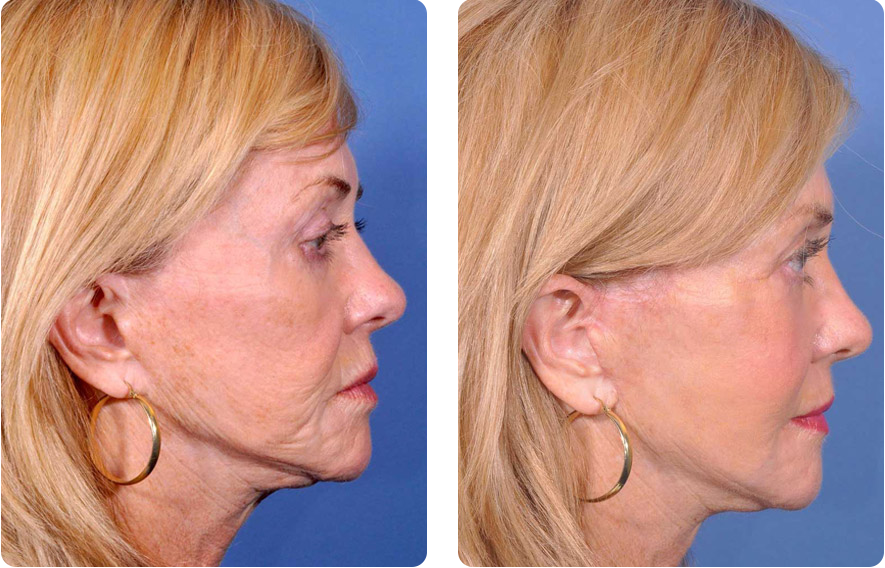

Patients who choose to schedule surgery will receive specific medications and instructions to follow before arriving at one of our surgical facilities. Twilight anesthesia is most commonly used during the procedure.
Before surgery, there is no need to shave any hair. Incisions are carefully placed in front of and behind the ear, following the natural contours of the face and neck, and merging seamlessly into the hairline. These incisions result in very fine scars that blend naturally with the skin’s creases and the surrounding hair-covered areas of the scalp. In some cases, there may be temporary hair thinning along the incision line, but this usually resolves itself within six months.
It is highly recommended that you spend the first night after surgery with one of our highly trained and experienced sitters. They have years of experience taking care of facelift patients. They know Dr. Fedok’s routines and Dr. Fedok has confidence in their capabilities. It is Dr. Fedok’s intent for your postoperative course to be a calm, relaxing experience with no worries or stress.

Minimize Platysma Bands
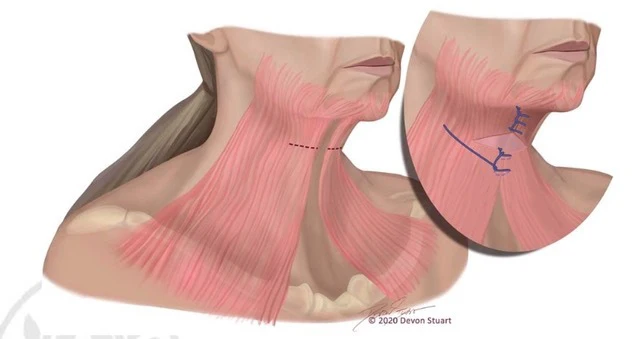
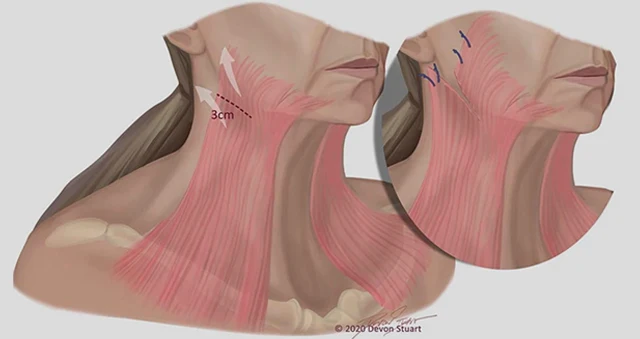
From: Fedok and Sedgh. (2020) Another look at Platysmaplasty in Facelifting. Facial Plastic Surgery
The facelift procedure typically is not painful, although patients might experience minimal discomfort in the postoperative phase. Following facelift surgery, a turban-style bandage is worn around the head and face until the morning after the procedure. It is then replaced with an elastic band that is worn around the face. The initial bandage worn post-surgery helps prevent swelling or fluid accumulation in the operated areas. There might be slight swelling and discoloration around the ears and occasionally in the neck, but this usually resolves within one to two weeks.
In most cases, Dr. Fedok will place a thin drain during surgery to help mobilize swelling and ooze after the surgery. In men, he frequently places 2 drains. The use of a drain lessens the amount of drainage your body must absorb after the surgery thus lessening bruising and swelling. The drain is usually removed one or two days after surgery.
Dr. Fedok recommends that patients get out of bed within the first twenty-four hours after surgery to take a shower and resume a low level of normal activities. Sleeping propped up and applying cold compresses are recommended for the day of surgery, as well as the following four days. Any sutures in the hairline or around the ears are removed within two weeks following the face and necklift surgery. Women can usually start wearing makeup after ten days, and all patients are generally allowed to drive in the second week after surgery. Returning to work is also typically permitted at this time.
Mobilize, Reposition and Lift Deeper Tissue
(2020) Devon Stuart
From: Sedgh and Fedok (2020): Different faces different facelift techniques
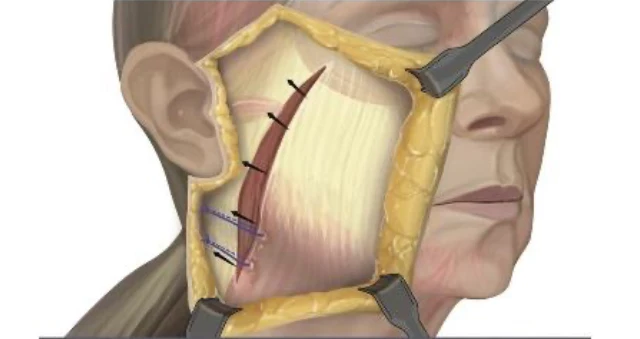

A facelift is a safe procedure that Dr. Fedok performs frequently. As with any surgery, there are risks associated with the procedure. Risks include bleeding, healing problems and problems with nerve functions after surgery. Dr. Fedok will discuss all of the considerations with you before you undergo the surgery. Please note that Dr. Fedok has extensive and well-recognized expertise in cosmetic surgery to guide you through a safe and successful surgery.
During your consultation, Dr. Fedok will thoroughly evaluate your facial structure and discuss your goals and concerns to determine the best approach for your facelift and necklift procedures. Schedule your consultation today and take the first step towards a more confident you.

By Dr. Fedok, a well-respected and widely published double board-certified plastic surgeon whose before and after gallery, RealSelf and Google Reviews reflect his trusted expertise.
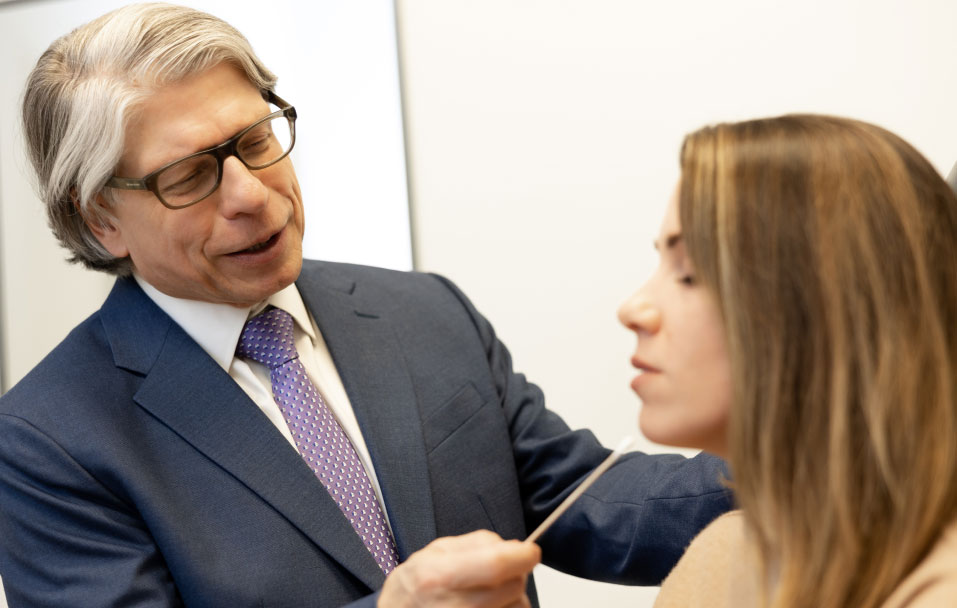
Each patient who considers a facelift wants to know how much improvement they can expect and how long it will last. The amount of improvement depends on the amount of tissue sagging and wrinkling that is present preoperatively. If the operation is completed early in the aging process, a patient can anticipate a look that is refreshed and less tired-looking. A person who has waited can expect more dramatic results, especially if there is significant wrinkling and sagging. However, more initial rebound-relaxation will occur the farther along the initial problems of sagging skin and fat have occurred.
There have been several modifications of facelifting techniques that allow a significant improvement for our patients, but with shorter recovery times and smaller incisions. These procedures are usually less extensive than traditional facelifts and at times can even be done in the office.
When the aging process causes the sagging to reappear, a secondary facelift, or facial tuck-up, may be performed. This often provides more dramatic and longer-lasting improvement. In some individuals, it may be necessary to perform this procedure as soon as six months to one year after the initial facelift, especially in males with a thick and heavy neck. The secondary facelift is recommended for patients who have a severe degree of sagging preoperatively and experienced an accelerated aging process.
Each patient who considers a facelift wants to know how much improvement they can expect and how long it will last. As mentioned in an earlier section, the amount of improvement depends on the amount of tissue sagging and wrinkling that is present preoperatively. If the operation is completed early in the aging process, a patient can anticipate a look that is refreshed and less tired-looking. A person who has waited can expect more dramatic results, especially if there is significant wrinkling and sagging. However, more initial rebound-relaxation will occur the farther along the initial problems of sagging skin and soft tissue have occurred. As Dr. Fedok has stated, in decades past, people underwent a facelift and then basically waited until they got droopy again and then had a new facelift. A seven year interval was common. However, the paradigm has changed in the following ways:
An individual’s long term result is now and will be continue to be highly variable based on their underlying genetics, at what age they have their facelift, what adjuncts they take advantage of, their health history and all the factors noted above. Dr. Fedok is highly confident that this generation of patients undergoing facelift will enjoy some of the longest durations of positive results in history, and in many cases, will be benefitted by only needing one facelift procedure for the rest of their lives.